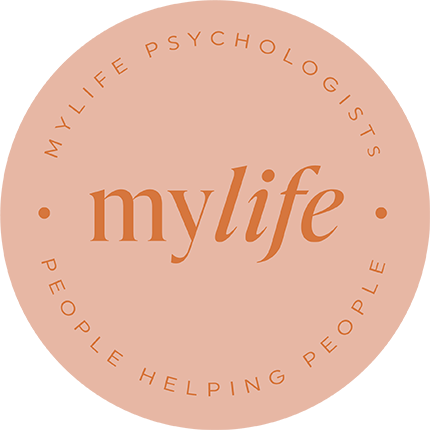Dialectical Behaviour Therapy (DBT) is a variation of Cognitive Behaviour Therapy (CBT).
Developed in the 1980s to treat borderline personality disorder, it’s now a viable therapy for many conditions. In this post, we’ll be exploring what DBT involves and what it can be used for — as well as the key benefits.

What is Dialectical Behaviour Therapy (DBT)?
DBT evolved from Cognitive Behaviour Therapy (CBT), and like CBT, it is a form of talking therapy designed to help us manage a variety of mental health conditions and challenges.
DBT was first created to help people with borderline personality disorder and has a greater emphasis on managing extreme emotions and relationships.
The Oxford English Dictionary defines ‘dialectical’ as the following: Concerned with or acting through opposing forces.
This is an accurate way of describing how DBT works. It simultaneously aims to develop acceptance as well as promoting behavioural changes. These two seemingly opposing forces work together to aid recovery.

How Does DBT Work?
There are four key aspects of DBT — often known as the four modules or skills. Two of these relate to acceptance, and two relate to behavioural change:
1. Mindfulness
Mindfulness is usually the first way a DBT therapist will help promote acceptance. This involves observing your thoughts, emotions and actions, without judgement.
2. Distress Tolerance
Behaviour change isn’t always possible immediately — especially in times of crisis. Distress tolerance is the second acceptance skill developed in DBT. It helps us cope with emotional pain and challenging situations, accepting them for what they are and letting go of what we think they ‘should’ be.
3. Emotional Regulation
Emotional regulation helps us work with intense emotions, developing strategies to regulate them. To start with, this involves learning how to identify emotions for what they are (e.g. anger, sadness, anxiety). Over time, the therapist will help you learn techniques to:
• Reduce your susceptibility to extreme emotions,
• Experience more positive emotions,
• Cope better when intense emotions do arise.
4. Interpersonal Effectiveness
The final way DBT works is by improving the way you communicate in relationships with others. This can help you be more assertive, communicate your needs clearly and set boundaries to protect your mental health.

What can DBT help with?
Borderline Personality Disorder
Borderline personality disorder (BPD) was the first condition treated using DBT.
BPD is a condition that affects how a person feels about themselves. Intense emotions are characteristic of BPD — as are unstable relationships with others. Research shows DBT is effective in managing these BPD symptoms, especially in people with BPD who also self-harm.
Eating Disorders
Although CBT is effective for many people with eating disorders, it does not work for everyone. Research suggests DBT could be an effective alternative.
For some people with eating disorders, their condition is a way to escape, control or manage intense emotions. In these cases, DBT can help the individual learn other methods of coping with emotions. This is likely to work best for people with bulimia nervosa or binge eating disorder, rather than anorexia nervosa.
Self-Harm
Deliberate self-harm can exist either on its own or alongside another mental health condition.
People who self-harm tend to do so as a means to escape difficult feelings or experiences.
DBT can help these people learn other ways to cope with these emotions, memories and urges. First of all, DBT helps the individual to accept their feelings as a valid part of their experience — and then it builds tolerance to distress and better regulates emotions.
Depression and Suicidal Thoughts
The link between suicidal ideation and BPD was first discovered by Dr Marsha Linehan, who created DBT. She noted that treating people with BPD with DBT significantly reduced the risk of suicide attempts — a key feature of borderline personality disorder.
This makes sense. People experiencing suicidal thoughts often struggle to tolerate their distress, manage intense emotions and communicate with others. DBT addresses each of these — and helps the individual develop alternative coping strategies.
What are the Benefits of DBT?
1. It Improves Your Relationships
A good support network is key when dealing with mental health challenges. Many types of therapy fail to take this into account, expecting you to go it alone.
But DBT advocates understanding the importance of our social relationships in overcoming challenges. Creating healthy relationships — with respectful boundaries and trust — can improve health and wellbeing in a multitude of ways.
2. The Skills Go Beyond Mental Illness
Although the aim of DBT is to improve the symptoms of people living with mental illnesses, it doesn’t end there. The skills taught by the DBT therapist can be applied to many other areas of life too.
For example, research links mindfulness to many other aspects of health and wellbeing. Once you have learned this skill, it can help in many aspects of life — including at work, home and play.
3. It Improves Quality of Life
One of the main focuses of DBT is to improve the quality of life. The truth is, we can’t always change what happens to us. For some, mental health challenges will be a part of life forever — and acceptance of this fact is, therefore, key to moving forward.
DBT aims to improve quality of life by gently helping people make changes to move them in the right direction, whilst simultaneously letting them know it’s okay to find things difficult.
For those experiencing intense and disruptive emotions, quality of life can be impacted quite severely. Here, the distress tolerance and emotion regulation modules really come into their own.

Conclusion
To conclude, DBT can be an effective choice of treatment for those who have not been able to get results using traditional CBT courses.
It is especially useful for people with borderline personality disorder, suicidal ideation or self-harm — helping sufferers develop a more mindful, resilient and adaptable outlook. It does this using four modules. Two of them are focused on cultivating greater acceptance, whilst the other two are focused on behavioural changes to promote recovery.
Get in touch to find out more, and to learn whether DBT is suitable for you.
References:
https://www.lexico.com/en/definition/dialectical
https://www.sane.org/information-stories/facts-and-guides/dialectical-behaviour-therapy-dbt
https://www.mind.org.uk/information-support/drugs-and-treatments/dialectical-behaviour-therapy-dbt/about-dbt/#.XXLS4ZNKh8c
https://www.verywellmind.com/dialectical-behavior-therapy-dbt-for-bpd-425454
https://www.verywellmind.com/dialectical-behavior-therapy-for-eating-disorders-1138350






